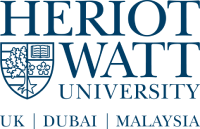Dr SJ Greaves
No more applications being accepted
Competition Funded PhD Project (UK Students Only)
About the Project
Chemical processes at the gas-liquid interface are of profound interest in a range of diverse applications from atmospheric chemistry at the surface of aerosols, to combustion of liquid fuels, from respiration to distillation. The chemical dynamics study of such processes have been hindered by restrictions to vacuum compatible liquid surfaces and a reliance on traditional mass-spectrometric or spectroscopic methods. Such measurements only provide angular or quantum state information about the products of gas-surface collisions. It has been established by many practitioners that implementation of the velocity map imaging technique, which allows for both angular and quantum state resolved measurements, would be highly advantageous. The aim of this project is to build upon our groups’ recent demonstration of the velocity map imaging of gas-surface scattering,1 and apply it to the study of inelastic and reactive collisions of small atmospherically relevant gas molecules with low vapour pressure liquid surfaces.
The research programme would involve the candidate working to optimise an in-vacuum flowing liquid surface that is between high voltage electrodes in the velocity map imaging spectrometer. This will open up a unique new methodology for studying interactions at gas-liquid interfaces that would only exist at Heriot-Watt. Current improvements to the apparatus will allow a greater range of surface scattering angles to be imaged in a single measurement, and consequently allow multiple mechanistic scattering pathways to be determined. Possible scattering systems include Oxygen, Nitrogen & NO molecules colliding with squalene & perfluoropolyether; this would allow the inelastic scattering comparison of O/N atom-first collision with a surface. The project would also explore the possibility of orienting the NO molecules before collision with the surface using a large static electric field, permitting the study the dynamics of O/N first or side on approaches to the surface.
I am seeking a talented individual to join the group at this exciting time. A suitable applicant will have a 1st class undergraduate degree (or equivalent) in chemistry or physics and be strongly motivated with the drive required to pursue three years of intensive and rewarding study. The project will require both individual and group work and a successful candidate must be capable of operating effectively in both environments. Any candidate must have a good grounding in the theories of chemical dynamics and spectroscopy or lasers. Some previous experience of laboratory work is also expected – preferably in the form of a relevant undergraduate project within the general area of atomic or molecular spectroscopy/dynamics. Experience of vacuum systems and computer programming (especially LabView) would be highly desirable but is not essential. The candidate will also be expected to contribute to dissemination of the research findings through paper writing and presentations at national and international conferences.
See our website at www.dynamics.eps.hw.ac.uk
The Institute of Chemical Sciences (ICS) is an excellent environment for PhD research, with a thriving community of academics, post-doctoral and PhD researchers spread across three sections: Molecular Chemistry, Materials Chemistry, and Dynamics and Structure. ICS also has many links to the other research institutes within the overall umbrella of the School of Engineering and Physical Sciences, providing a strong interdisciplinary theme to our research. Heriot-Watt University occupies an attractive campus site on the outskirts of Edinburgh, with excellent public transport links to the centre of one of the Europe’s most exciting cities.
Funding Notes
You should have, or expect to receive, a First class or 2:1 MChem degree in Chemistry, or equivalent in a relevant related subject. This project is funded by an EPSRC Doctoral Training Partnership (DTP), providing tuition fees and a stipend (approx. £14,500) for 3.5 years, and is only available to UK & EU nationals resident in the UK for the last 3 years.
References
For information on our recent work in Gas-surface imaging, please see the following (and references therein):
1. D. J. Hadden, T. M. Messider, J. G. Leng & S. J. Greaves, Velocity map imaging the scattering plane of gas surface collisions, Rev. Sci. Instrum., 87, 106104, (2016), doi: 10.1063/1.4965970.

 Continue with Facebook
Continue with Facebook

